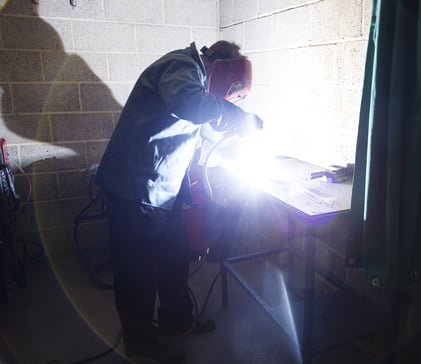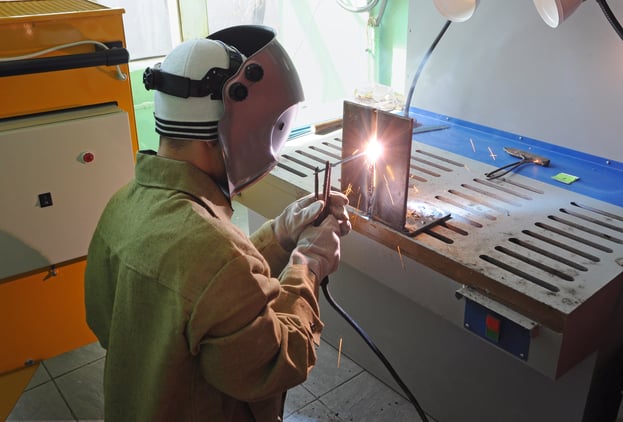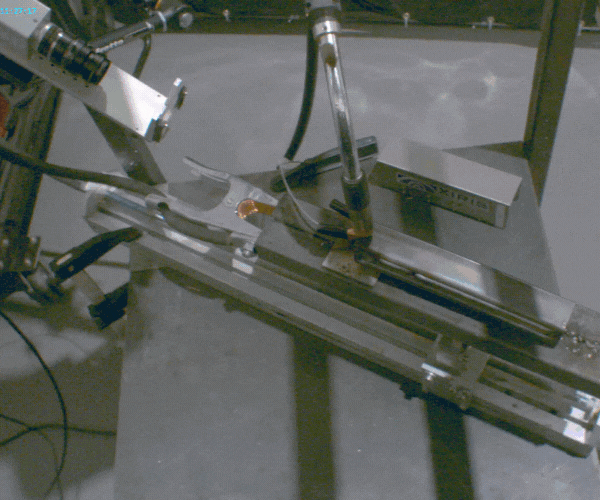
As in any trade, young apprentices must work hard to learn the skills and foundational knowledge that is required to become a professional in the welding industry.
Having worked with over 130 training facilities and educators over the years, we have learned from some of the best welding instructors what the most important welding lessons that any young welder must master. Below are a few of our top tips for the beginner welder that many educators and instructors strive to teach their students, doing so with the help of Xiris technology.
1. Safety is the Top Priority
There are numerous hazards when it comes to welding which is why it is most important that students understand and apply safety best practices during their welding journey. Instructors must ensure that students are actively protecting themselves by wearing the proper PPE such as flame-resistant gloves, weld helmet with suitable eye protection, a long sleeve welding jacket and more. Instructors should also always make sure that students have the proper ventilation and avoid inhalation of the welding fumes.
2. Staying Comfortable
It is important to reduce the risk of injury by considering ergonomics and ensuring students are staying comfortable. Students can often fall victim to hazards resulting from awkward body or wrist postures, lifting heavy equipment, holding a static posture for a prolonged period, repetitive movements and more. Instructors and students should always try to improve the ergonomics of the welding classroom to ensure the students stay as cool and comfortable as possible. The instructor can keep an eye on the student to make sure they are holding the gun or torch comfortably or that their hands are being supported while still maintaining proper form, either directly or via a camera.

3. Learning to Troubleshoot
While instructors should be providing students with sufficient weld settings, students should also be learning to troubleshoot the welding process and adjust for discontinuities on their own. Students should be able to identify welding problems that develop and quickly rectify them before there becomes a major quality problem. Parameters such as the amount of shielding gas, welding power settings, wire feed rates, torch position, welding speeds all need to be modified and adjusted when problems are identified.
4. Practice Makes Perfect
While obvious, it is still important to make sure students are getting lots of practice. They should be spending a significant amount of time practicing laying down welding beads concentrating on the shape and consistency of the weld puddle and bead. Then once they get good welding with one hand, students should switch directions and switch hands. With more practice comes more feedback and students will continue to learn and improve their skills.
For instructors, ensuring that students are understanding and applying these tips is easier said than done.
One of the biggest challenges is watching and providing feedback for all the students, all the time. However, as the instructors and educators that we have worked with know, implementing technology in the classroom such as Xiris weld cameras can help instructors in guiding and teaching their students.
Some of the technology that we offer at Xiris includes the newly released CellView camera. The CellView camera gives instructors a view of the entire student welding cell to get the big picture on how the student is performing and improving. When used in combination with the Xiris RTSP, instructors can live stream and monitor the progress of multiple students from one centralized location and then provide feedback.

The CellView camera can be an important tool in helping instructors demonstrate these best practices to students by allowing them to record demo welding videos. The wide-angle view of the camera can see the entire welding booth and the recorded video can be displayed next to an up-close video of the resulting weld and its details, all on the same screen.
Welding, like most industries today, benefits from technological advancements. Xiris technology in the welding classroom can not only aid instructors in providing more meaningful and effective instruction for their students, but it can also attract and draw in more young welders to the industry. By learning about it in the classroom, students can become familiar with camera technology such as the CellView camera that they will continue to see once they enter industry.
If you are interested in learning more about the Xiris CellView camera you can download the datasheet or request to speak with our education expert to discuss a solution for your specific setup.
Stay up to date by following us on social media or subscribing to the blog!




.png)

